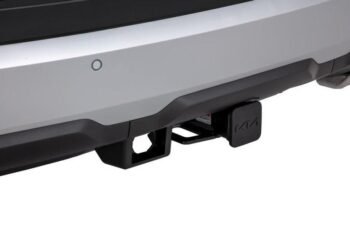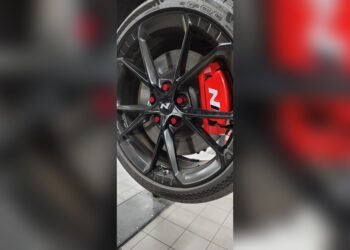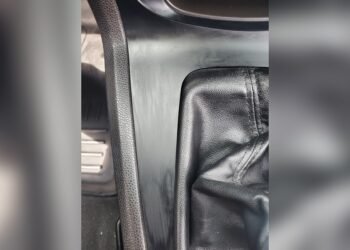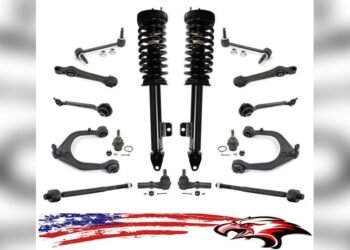Can you braze an exhaust pipe? If you’ve ever faced cracks, leaks, or tricky joins in your exhaust system, you might be wondering if brazing is a good fix.
Brazing uses heat to melt a filler metal that bonds parts together without melting the pipes themselves. This means less warping and damage compared to welding, especially on thin or delicate parts. But is brazing strong enough to handle the heat and stress your exhaust faces every day?
You’ll discover when brazing makes sense, what limits it has, and how to get the best results. Keep reading to learn if brazing can be the solution you need for your exhaust pipe repair or upgrade.
Brazing Basics
Brazing is a metal-joining technique used in various repairs, including exhaust pipes. It involves melting a filler metal that flows into the joint without melting the base metals. This process creates a strong bond between parts. Brazing is popular for precise and delicate work because it uses lower heat than welding. Understanding the basics of brazing helps decide if it suits your exhaust pipe repair needs.
How Brazing Works
Brazing joins metals by melting a filler metal into the joint. The base metals heat up but do not melt. The molten filler metal flows into the gap by capillary action. When cooled, it solidifies and forms a strong bond. The parts must fit closely and be clean for brazing to work well.
Materials Used In Brazing
Common filler metals include brass, bronze, and silver alloys. These metals melt at lower temperatures than the base metals. The base metals in exhaust pipes are usually steel or stainless steel. Brazing filler metals must match or be compatible with these base metals. Proper choice of materials ensures a durable repair.
Heat Requirements
Brazing requires lower heat than welding. Typical brazing temperatures range from 1150°F to 1600°F (620°C to 870°C). This lower heat helps avoid warping or damaging thin exhaust pipes. A torch or furnace can provide the heat needed. Controlling the heat precisely is important to achieve a strong joint.

Credit: www.youtube.com
When To Braze Exhaust Pipes
Brazing exhaust pipes works best in certain situations. It uses lower heat than welding. This prevents damage to thin or delicate parts. Knowing when to braze helps you choose the right repair method.
Use brazing for small repairs and joining different metals. It also helps avoid warping thin materials. Each case needs a careful approach to ensure a strong joint.
Repairing Cracks And Small Gaps
Brazing fills cracks and small gaps in exhaust pipes well. The filler metal flows into the damaged area. This creates a solid bond without melting the base metal. It works best for minor damage that does not need heavy welding. The lower heat reduces risk of further cracking.
Joining Dissimilar Metals
Exhaust systems may have pipes made from different metals. Brazing joins these metals safely. It avoids problems welding can cause, like weak joints or metal warping. The filler metal bonds both surfaces without melting them. This makes brazing ideal for mixed metal repairs.
Preventing Warpage In Thin Materials
Thin exhaust pipes can warp from high heat during welding. Brazing uses less heat, protecting the pipe’s shape. This keeps the pipe stable and avoids costly replacements. It is a gentle method that maintains the pipe’s strength and form.
Brazing Vs Welding
Brazing and welding are two common methods to join metals. Both work differently and suit different repair needs. Understanding the differences helps choose the right method for exhaust pipe repairs.
Strength Comparison
Welding creates a fusion bond by melting base metals together. This results in a very strong joint. Brazing uses a filler metal to join parts without melting the base metals. Brazed joints are strong but usually not as strong as welded ones. For high-stress areas, welding provides better durability.
Temperature Differences
Welding requires very high heat, often above 2,500°F. This melts the base metals for a solid bond. Brazing works at lower temperatures, typically between 1,100°F and 1,600°F. Lower heat reduces the risk of warping or damaging thin exhaust pipes. Brazing is gentler on delicate parts.
Suitability For Exhaust Repairs
Welding suits large cracks and heavy-duty exhaust repairs. It handles high heat and vibration well. Brazing works best for small cracks and thin or hard-to-weld parts. It seals gaps and creates leak-proof joints without much heat damage. Brazing is a good choice for quick fixes and precise repairs.
Preparing For Brazing
Preparing for brazing is a key step to ensure a strong, lasting joint on your exhaust pipe. Proper preparation affects the quality and durability of the brazed connection. You need to focus on cleaning, choosing the right flux, and fitting the parts precisely. These steps help the filler metal bond well without contamination or weak spots.
Cleaning And Surface Preparation
Clean the exhaust pipe surfaces thoroughly before brazing. Remove rust, dirt, grease, and old paint. Use a wire brush or sandpaper to expose bare metal. Clean surfaces help the filler metal flow and stick properly. Wipe the parts with a solvent like acetone to remove oil and dust. Proper cleaning avoids weak joints and poor adhesion.
Choosing The Right Flux
Select the correct flux designed for brazing exhaust pipes. Flux stops oxidation during heating and helps the filler metal flow smoothly. Use a flux compatible with the metals and brazing alloy you plan to use. Apply it evenly on the joint surfaces. Flux also prevents corrosion in the finished joint. Without proper flux, the joint may fail or become brittle.
Ensuring Proper Fit And Gap Size
Fit the parts tightly with a small gap between them. A gap of about 0.002 to 0.005 inches allows the filler metal to flow by capillary action. Too wide a gap weakens the joint. Too tight leaves no space for the filler to fill. Use clamps or fixtures to hold parts steady during brazing. Proper fit ensures a strong and clean bond.
Brazing Process Steps
The brazing process involves joining metal parts using a filler metal. This filler metal melts at a lower temperature than the base metals. It flows into the joint by capillary action, creating a strong bond without melting the exhaust pipe itself. Proper steps in the brazing process ensure a durable and clean connection for your exhaust pipe repair.
Heating The Exhaust Pipe
Start by cleaning the pipe to remove dirt and rust. Use a torch to heat the pipe evenly. Heat it until it reaches the right temperature for the filler metal to melt. Avoid overheating to prevent damage to the pipe.
Applying The Filler Metal
Touch the filler metal to the heated joint area. The metal will melt and flow into the gap between the pipe sections. Move the filler metal smoothly to cover the entire joint. This creates a strong and sealed connection.
Cooling And Inspection
Let the joint cool naturally without disturbing it. After cooling, inspect the joint for cracks or gaps. A good brazed joint should look smooth and continuous. Remove any excess filler metal and clean the area before use.
Limitations And Considerations
Brazing an exhaust pipe offers a practical repair method but comes with clear limitations and important considerations. Understanding these factors helps decide when brazing is suitable and when other methods are better. The choice affects the durability and safety of the exhaust system.
Heat Resistance Of Brazed Joints
Brazed joints have lower heat resistance compared to welded ones. Exhaust pipes reach very high temperatures during operation. Excessive heat can weaken the brazed joint over time. This limits brazing use to areas with moderate heat exposure. High-heat zones need stronger solutions like welding.
Joint Strength And Durability
Brazed joints are generally less strong than welded joints. The filler metal melts but the base metals do not, creating a bond that is not as robust. This can cause the joint to fail under vibration or mechanical stress. Brazing is best for small cracks or thin parts that do not bear heavy loads.
Effects On Stainless Steel Components
Stainless steel exhaust parts require special care during brazing. The heat and filler material can affect the metal’s corrosion resistance. Improper brazing may cause discoloration or weaken the steel’s protective layer. Using correct filler alloys and controlling temperature is critical for stainless steel joints.
Alternative Repair Methods
Alternative repair methods for exhaust pipes offer various solutions beyond brazing. Each method suits different damage types and repair needs. Understanding these options helps choose the best fix for your exhaust system.
Using Clamps And Couplings
Clamps and couplings join exhaust pipe sections without heat or welding. They provide a quick, easy fix for leaks or breaks. These parts wrap around the pipe and tighten securely. This method works well for temporary repairs or when welding tools are unavailable. Clamps resist rust and vibration, keeping pipes stable.
Soldering Vs Brazing
Soldering uses lower heat and melts softer metals like tin. It forms a weaker joint compared to brazing. Brazing melts a stronger filler metal like brass, creating durable bonds. Exhaust pipes face high heat and stress, so brazing often lasts longer than soldering. Soldering suits thin metals or small fixes but may fail on heavy-duty pipes.
Fusion Welding Options
Fusion welding melts the base metals to join them firmly. This method creates the strongest and most permanent repair. Common types include MIG and TIG welding. Welding handles large cracks and thick metal repairs well. It requires skill and proper equipment for safety and quality. Fusion welding often outperforms brazing in strength and heat resistance.

Credit: biketransplant.tripod.com
Expert Tips For Strong Repairs
Strong brazed repairs on exhaust pipes need careful attention. Proper technique improves joint strength and durability. Follow these expert tips to ensure your brazing work lasts long and stands up to heat and vibration.
Maintaining Clean Surfaces
Clean surfaces are essential for strong brazed joints. Dirt, rust, and grease block the filler metal from bonding well. Use a wire brush or sandpaper to remove all contaminants. Wipe the area with a solvent to ensure no oil remains. Clean metal helps the filler flow evenly and creates a solid joint.
Controlling Heat Application
Apply heat evenly to avoid warping or damaging the pipe. Use a proper torch with adjustable flame size. Heat the base metals, not just the filler. Overheating can weaken the pipe or cause poor filler flow. Keep the temperature just high enough to melt the filler metal and allow it to flow smoothly into the joint.
Choosing The Correct Filler Material
Select a filler metal compatible with the exhaust pipe material. Commonly, brass or bronze rods work well on steel exhaust pipes. The filler should melt at a lower temperature than the base metal. This prevents melting the pipe itself and keeps the joint strong. Match the filler type to the pipe for best results.

Credit: www.reddit.com
Frequently Asked Questions
Can You Braze Exhaust Pipes?
Yes, you can braze exhaust pipes to repair cracks or fill gaps. Brazing uses lower heat, reducing warping. It suits thin or delicate parts but is less strong than welding for high-heat areas. Ensure clean surfaces and tight joints for a durable repair.
How Do You Join Exhaust Pipes Without Welding?
Join exhaust pipes without welding using U-bolts, band clamps, or V-band clamps. These provide secure, leak-free connections quickly and easily.
Can I Braze Instead Of Solder?
Yes, you can braze instead of solder. Brazing creates stronger, more heat-resistant joints than soldering. It suits thin materials and small gaps. Ensure clean surfaces and proper fit for best results. Brazing works well for delicate or dissimilar metals but may not match welding strength.
What Is The Difference Between Brazing And Welding Exhaust Pipes?
Brazing uses lower heat and melts filler metal to join pipes without melting base metals. Welding melts and fuses metals directly, creating stronger joints. Brazing suits thin or delicate parts, while welding handles high heat and large gaps better in exhaust pipes.
Can You Braze An Exhaust Pipe To Fix Cracks?
Yes, brazing can repair cracks by filling gaps with a strong filler metal like brass.
Conclusion
Brazing an exhaust pipe can work well for small repairs and thin metals. It uses less heat, so it avoids warping parts. Brazing joins different metals effectively, which welding may struggle with. Still, it may not hold up well under very high heat or large gaps.
Always clean surfaces and keep the gap right for best results. For bigger or high-heat jobs, welding often provides a stronger, longer-lasting fix. Choose the method that fits your repair needs and material type.

















